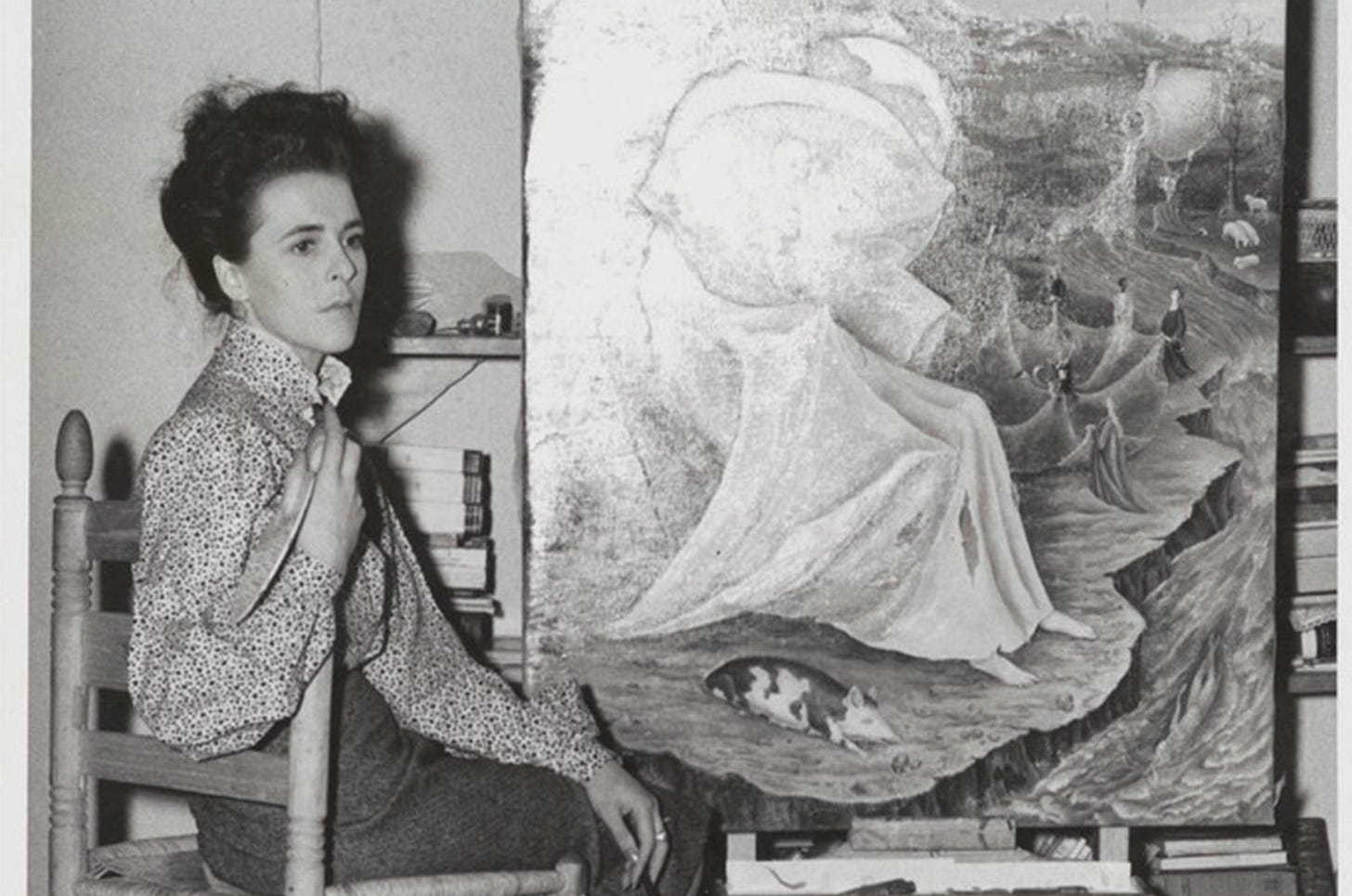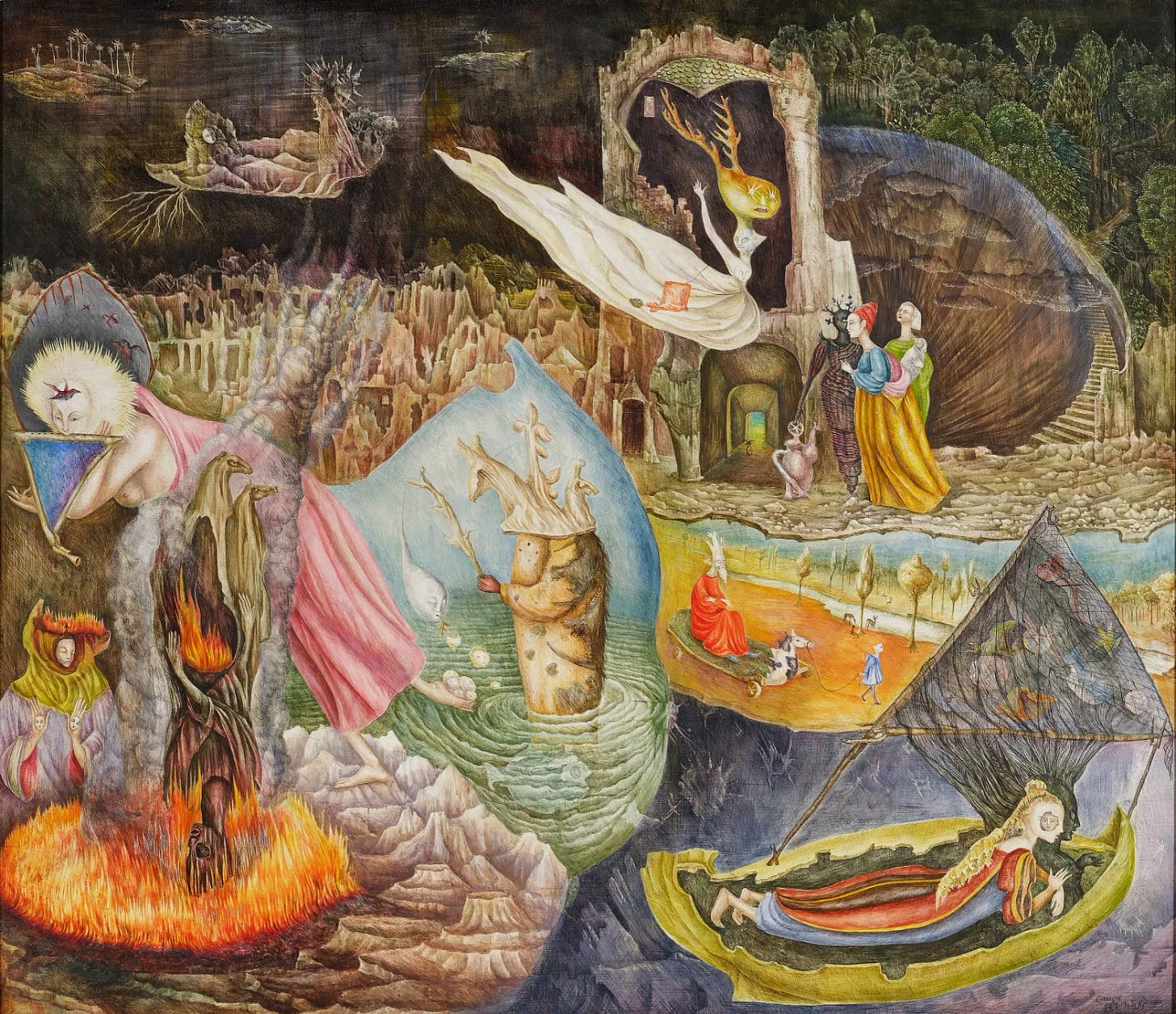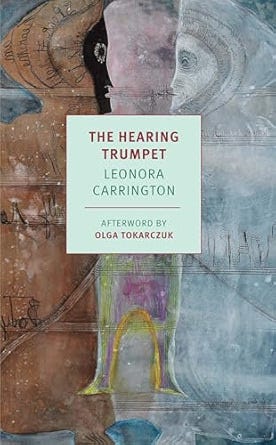The Hearing Trumpet by Leonora Carrington is the wackiest, most subversive book I’ve read in a very long time. The novella follows Marian Leatherby, a quirky 92-year-old woman who moves from her son’s oppressive household to an extremely unusual ladies’ retirement community where, among other oddities, residents stay in boot- and cake-shaped bungalows. From there it’s hard to say what exactly happens, but time travel, a giant bee goddess, werewolves, and an apocalyptic ice age are involved. Carrington was one of Surrealism’s most notable practitioners, and The Hearing Trumpet captures the movement’s imaginative spirit. But the best way to experience this delightfully disorderly book is to just read it and get swept away by all its unexpected twists and turns.
I’d bet that there aren’t many books written from the perspective of a woman who is over the age of 90; I’d certainly never read one before now. Making someone like Leatherby the protagonist of a book feels like a radical act, perhaps because there’s a pervasive sense of invisibility or even scorn aimed at women who no longer serve as sex objects or active mothers. “In the patriarchal order, on reaching old age a woman becomes an even greater bother than when she was young,” Olga Tokarczuk writes in The Hearing Trumpet’s thoughtful afterward. Indeed, when the story begins, Carrington’s main character is stuck in what Tokarczuk calls “social nonexistence:” Leatherby is hard of hearing, slow-moving, and is seen as a burden to those around her. The hearing trumpet unlocks her power and sets off the book’s wondrous chain of events.

Despite its surreal strangeness, the book also seems to contain touches of autobiography. Recalling her past, Leatherby says that — like Carrington, who left England at age 20 — “Art in London didn’t seem quite modern enough and I began to want to study in Paris where the Surrealists were in full cry.” Leatherby’s elaborately painted chamber recalls the mural-filled home that Carrington shared with fellow Surrealist Max Ernst in the late 1930s, something I read about in Surreal Spaces: The Life and Art of Leonora Carrington by Joanna Moorhead (I reviewed the book for Hyperallergic in 2023). Leatherby and Carrington are also both long-term expats; The Hearing Trumpet takes place in an unnamed Spanish-speaking country, and Carrington lived in Mexico from 1942 until her death at age 94 in 2011. It’s even said that the main character’s feisty neighbor Carmella — who gives Leatherby her magical hearing trumpet — was modeled after Carrington’s close friend, the Spanish artist Remedios Varo.

Carrington was one of many Europeans who immigrated to the Americas to escape the horrors of the Second World War, and The Hearing Trumpet evidences a strong disdain for the forces behind human conflict. In a tone that is tongue in cheek but sharply critical, Carrington’s characters deride war (“that dreadful atom bomb they were so proud of’), governments (“a form of planetary hypnosis, and very unhealthy”), and Christianity (“Why was Eve blamed for everything?”). In the fantastical, free-wheeling world of The Hearing Trumpet, these confining and male-dominated institutions are discarded in favor of ancestral female energies and adventure. In fact, the people who triumph in Carrington’s book — old women and cloistered nuns — are normally kept at the far margins of society. But here, that distance from the acute attention of the center grants these women unique autonomy, and a special frankness and freedom that serves them well when the world around them collapses. Tokarczuk calls The Hearing Trumpet “one of the most original feminist texts ever written.” I think she must be right.




I want to read this book now! You did such a wonderful job pulling me in.